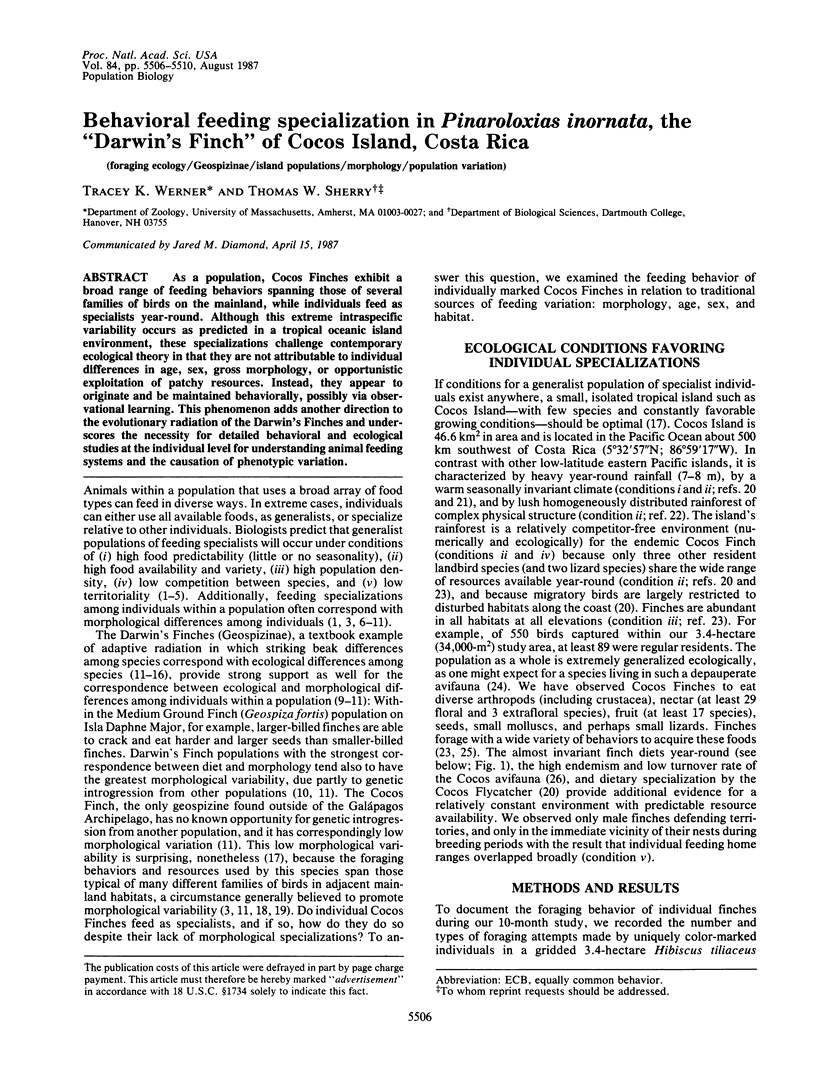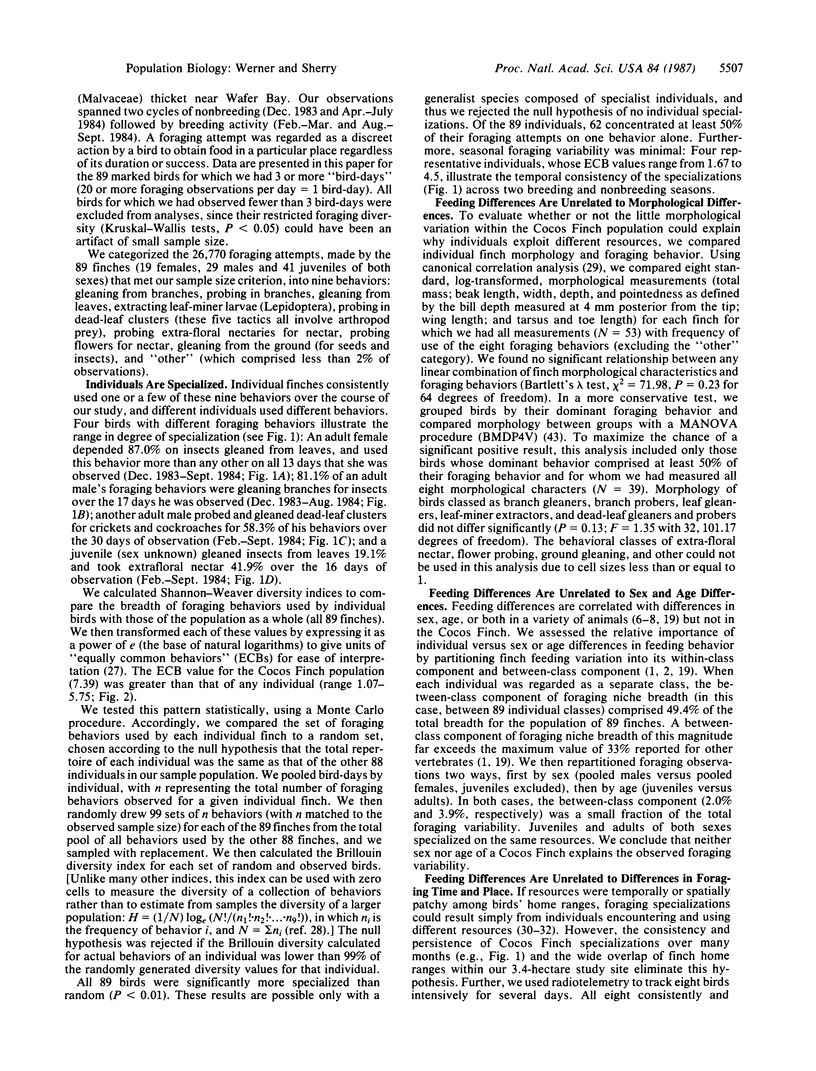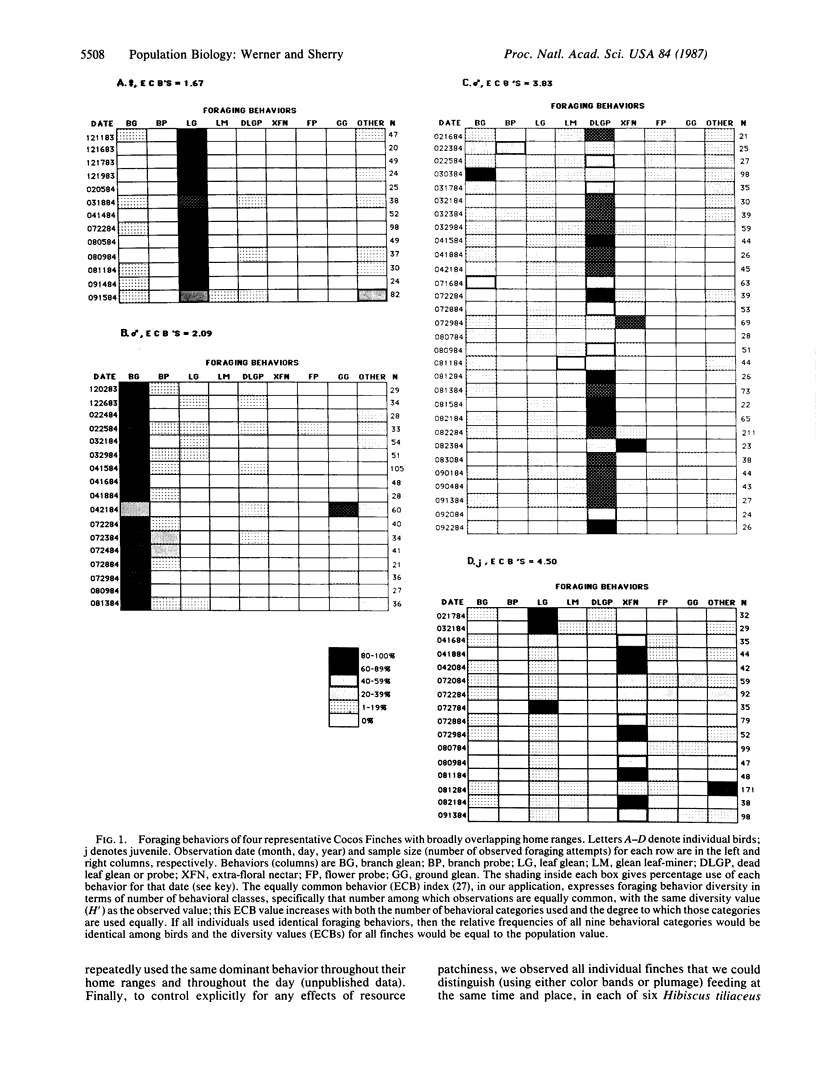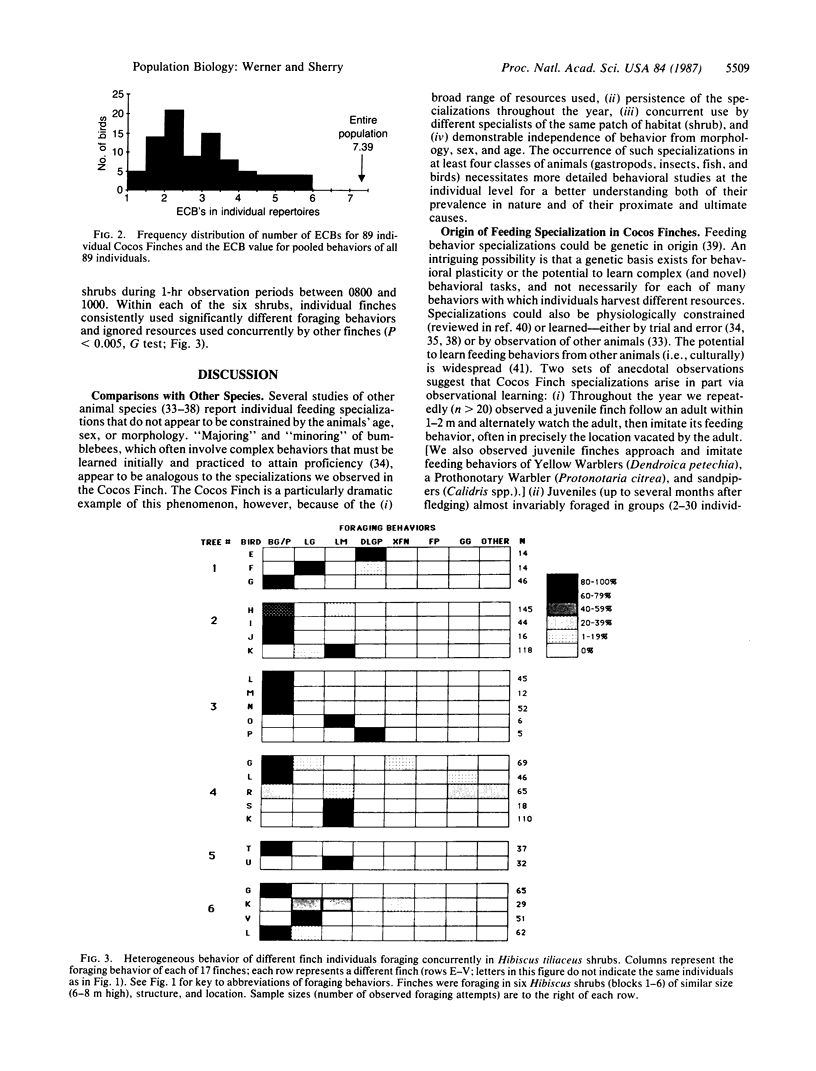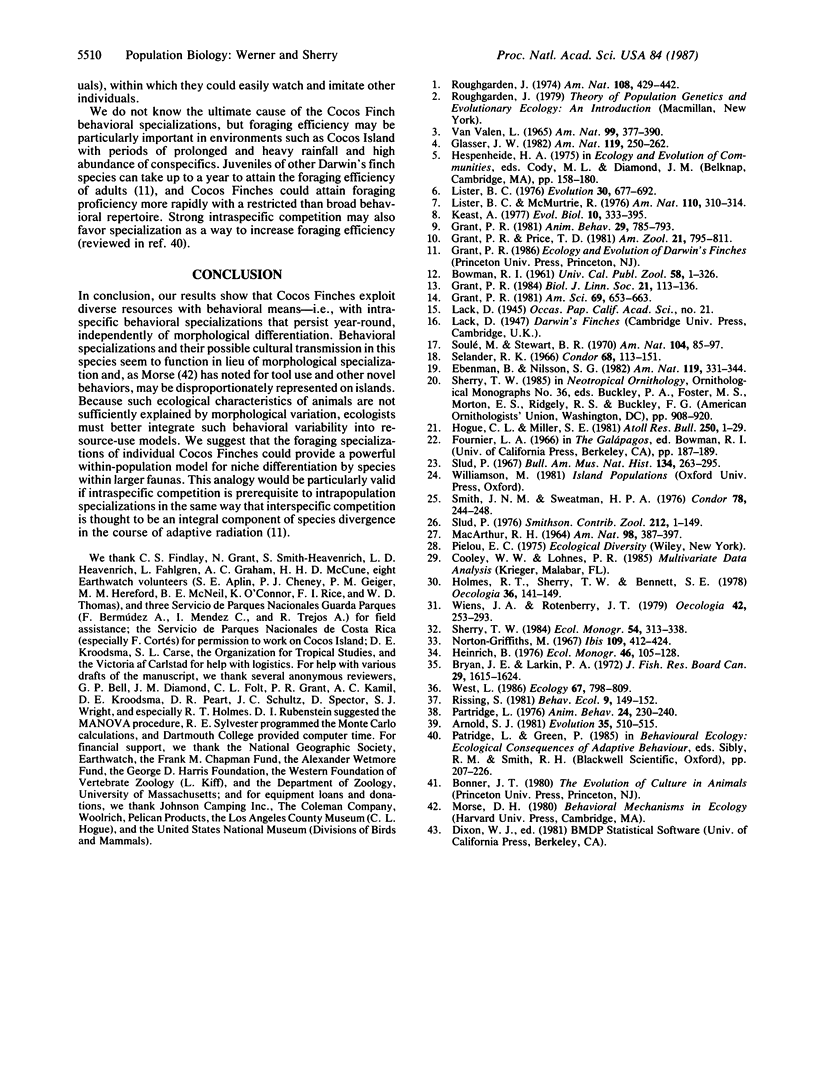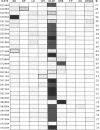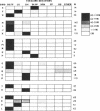Abstract
As a population, Cocos Finches exhibit a broad range of feeding behaviors spanning those of several families of birds on the mainland, while individuals feed as specialists year-round. Although this extreme intraspecific variability occurs as predicted in a tropical oceanic island environment, these specializations challenge contemporary ecological theory in that they are not attributable to individual differences in age, sex, gross morphology, or opportunistic exploitation of patchy resources. Instead, they appear to originate and be maintained behaviorally, possibly via observational learning. This phenomenon adds another direction to the evolutionary radiation of the Darwin's Finches and underscores the necessity for detailed behavioral and ecological studies at the individual level for understanding animal feeding systems and the causation of phenotypic variation.
Keywords: foraging ecology, Geospizinae, island populations, morphology, population variation
Full text
PDF